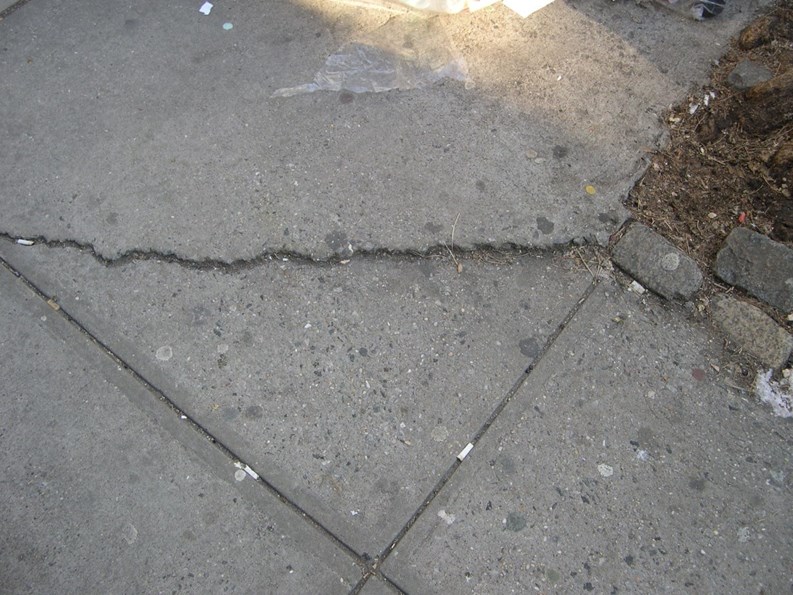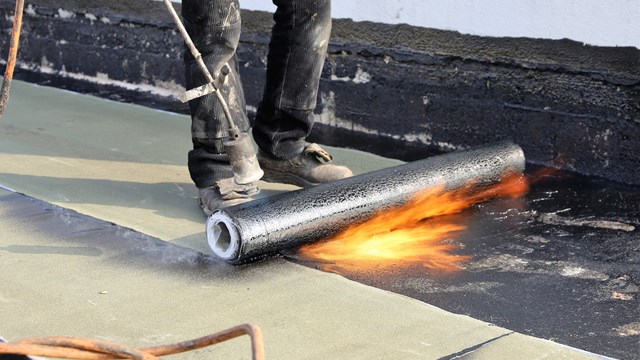Given the thousands of miles of sidewalks running through New Jersey's suburban communities, sidewalk maintenance in this region is serious business. Foot traffic, erratic weather, tree roots, and other factors all contribute to the gradual deterioration of urban and suburban sidewalks, and the threat of slip-and-fall lawsuits looms large for buildings and HOAs that fall behind on sidewalk maintenance.
What are the factors that contribute to buckling, cracked, and uneven sidewalks? How can boards and managers keep their own stretch of concrete in good repair to avoid unwanted legal drama? Let's take a look.
Sidewalk-through
There are sidewalks made of pavement, sidewalks made of slate, and sidewalks made of brick, but most modern sidewalks are made of concrete. Concrete, in fact, is reputedly used more than any other man-made building material on the planet.
The history of concrete is older and more extensive than most people probably realize. The ancient Egyptians, Babylonians, and Chinese all used rudimentary forms of concrete, and of course the Romans were well versed in its properties; the word concrete is from the Latin concretus, to harden.
After the formula was lost during the Dark Ages, along with just about everything else one identifies with civilization, concrete was re-discovered in Britain in the mid-18th century. Modern concrete is usually a combination of Portland cement, fly ash (a by-product of coal power plants), gravel, sand, special chemicals that do things like make new concrete bond to old or give it a brick-colored hue, and water.
While concrete tends to look pretty much the same the world over, there can be tremendous variation in its composition. What you get depends on what you need.
"The type of concrete measured by 'pounds per square inch' (PSI) and how thick your pour it all depends on the type of traffic you expect on the concrete surface," says Ted Wilson, owner of Advanced Pavement Technologies (APT) in Parsippany.
"For example, a typical sidewalk might be four inches thick, and you'd use a 3,500 PSI concrete. If the concrete is a pad under a heavy dumpster where a large truck may have to go, you'd use six- to eight-inch pad, and 4,000 PSI concrete. You have to know this in advance before you order the concrete from the plant," he says.
The Dark Side(walk)
A well-made and well-maintained concrete sidewalk can last 15 to 20 years, but there are many factors that contribute to the eventual breakdown of a sidewalk, starting with the way it was poured.
"The major thing is proper preparation," says Andrez Pacanski, owner of A&M Contracting in Wallington. If the foundation is not sound, "it's going to sink, and the concrete will crack."
Wilson agrees. "How the sidewalk is built also contributes to how quickly it will deteriorate," he says. "You want expansion joints and proper foundation and reinforcement underneath."
Quality of the material itself can also contribute to decades of use, or a quick deterioration.
"A bad mix from the plant or improper construction can all contribute to deterioration," says Wilson. "A couple of things you can do are to order from a reputable plant and to order a 'stiff mix,' which means you add water at the site to work it to the right consistency. When concrete is delivered, you should always check to see if it's too watery, and if it is the load should be rejected."
Born of water, concrete is also highly susceptible to it. "You need proper water drainage," says Pacanski. "Water gets between the slabs—concrete is divided into slabs to prevent cracks. Water turns to ice and expands, it can cause the concrete to crack."
Another big culprit is salt, which, over time, eats away at the surface. This is more of an issue in the winter, when rock salt is used to melt ice.
"No rock salt," emphasizes Ronald E. Powser of REP Masonry in Bridgewater. "There are alternatives to rock salt for the assistance of melting snow and ice." Powser recommends either sand or, for animal lovers, kitty litter. The kind made of clay is cheap and works well.
One last contributor to deterioration is more subtle: timing.
"You don't want to pour [a sidewalk or slab] when it's too cold," says Pacanski. The water won't react properly with the other ingredients, he says, causing a poor pour.
Fixing a Hole
If you look at the Washington Monument up close, you can see that the marble is two different shades. As legend has it, they ran out of stone from the first quarry, and had to resort to a second quarry to complete the job. Marble from two sources is almost impossible to match, because it's of a piece.
Concrete works in a similar way. Patching can be done, but it is always obvious.
"You should always expect that a patch on a sidewalk is temporary," says Wilson. "It won't hold up. That's because concrete doesn't like to bind to itself. There are products that are supposed to help this process, but expect that a patch will flake off quickly. You really may be better off by cutting out a section of the badly pocked sidewalk and replacing it."
In any case, patching is not always possible. Sometimes the surface below the sidewalk itself shifts over time.
"If the problem is that the subsurface has shifted," Wilson says, "you need to remove and replace."
Tree roots, which are the bane of the sidewalk contractor's existence, can also ruin a sidewalk from the bottom up. The only way to fix that problem, Wilson says, is to cut away the slab and completely remove the offending root.
The best way to repair a sidewalk, an ounce of prevention being worth a pound of cure, is to have it done properly to begin with. Custodians of the new sidewalk can help with this.
"Concrete cures over time," explains Powser. "To aid in the proper curing, it is recommended that for the first couple of days you spray the item with water. This helps to slow down the curing process, making it stronger, and eliminating cracking."
This technique is especially important in the summer, when temperatures exceed 75 degrees.
It's also important not to mar the surface until it is sufficiently dried. "Concrete cures slowly," Wilson says, "and it's considered 'green' for at least 30 to60 days, depending on the weather."
It is, unfortunately, difficult to tell by sight if a job was botched. "You have to wait until it dries," says Pacanski. "Then the problems appear."
The problems, Wilson says, range from poor finish, early scaling, broken edges and cracks that appear out of nowhere.
So how can an HOA make sure that the $11 to $16 per square-foot spent on removal and replacement of a sidewalk is money well spent?
"Your best insurance for a well-built sidewalk is to hire a qualified contractor whose work you can inspect, to make sure they know what they're doing and have a reputation for good work over the long run," says Wilson.
Greg Olear is a freelance writer and a frequent contributor to The New Jersey Cooperator.







Leave a Comment